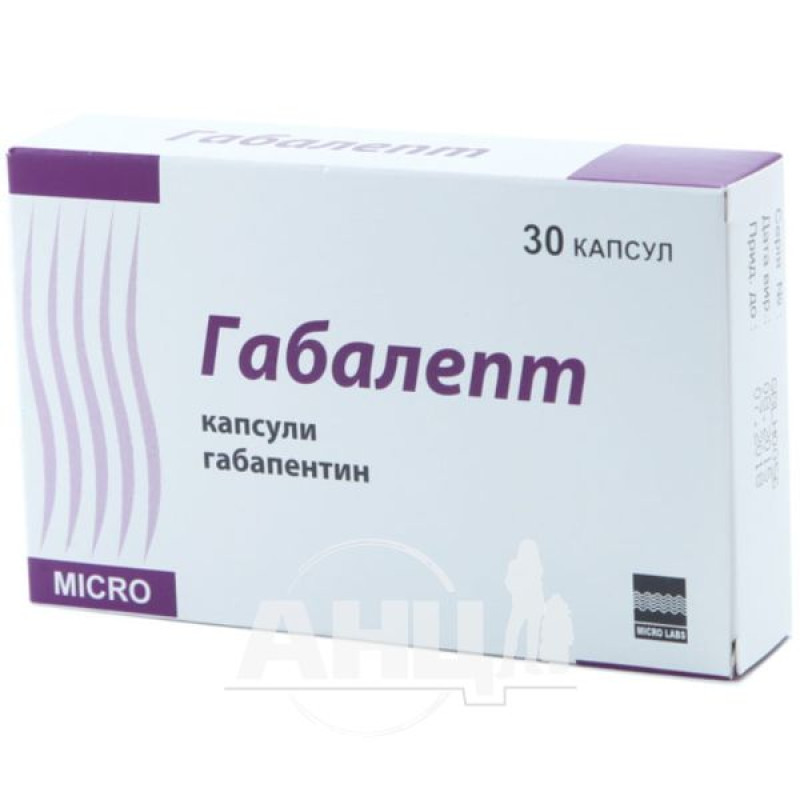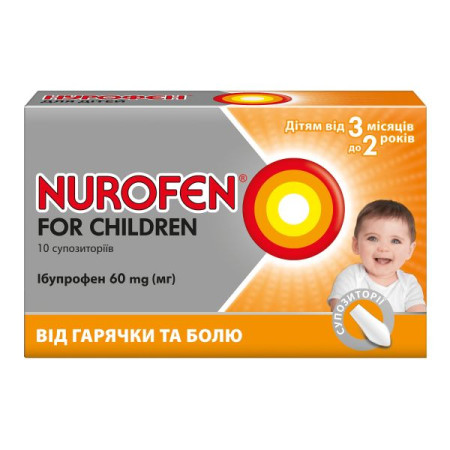Gabalept capsules 300 mg blister No. 30

Pharmacological properties
Pharmacodynamics. Gabapentin is structurally similar to GABA, but its mechanism of action differs from that of other drugs that interact with GABA receptors in the brain, such as valproate, barbiturates, benzodiazepines, and inhibitors. In vitro studies have identified new peptide receptors in rat brain tissue, including the hippocampus. It may be associated with the antiepileptic and analgesic activity of gabapentin and its structural derivatives. At clinical concentrations, gabapentin does not bind to GABA or GABA receptors, and does not inhibit GABA reuptake or GABA degradation by GABA transaminase. It does not interact with voltage-gated sodium channels, benzodiazepine receptors, excitatory neurotransmitter binding sites, or catecholamine, acetylcholine, or opiate receptors. Gabapentin is also effective in relieving neuropathic pain.
Pharmacokinetics
Absorption. After oral administration, C max of gabapentin is reached after 2-3 hours. Bioavailability decreases with increasing dose. Absolute bioavailability at a dose of 300 mg is about 60%, and at a dose of 1600 mg - 30%. Food does not affect the pharmacokinetics of gabapentin. The pharmacokinetics of gabapentin does not change after repeated administration.
Distribution. Gabapentin does not bind to plasma proteins. The volume of distribution is 57.7 L. It crosses the blood-brain barrier: in patients with epilepsy, the concentration of gabapentin in the cerebrospinal fluid is about 20% of the established plasma concentrations of the drug. It is excreted in breast milk.
It is excreted unchanged by the kidneys. T ½ is on average 5-7 hours.
In elderly patients and patients with impaired renal function, the elimination rate decreases in direct proportion to the level of creatinine clearance. It is eliminated by hemodialysis. Dose adjustment is recommended in patients with impaired renal function and those on hemodialysis.
Indication
Gabalept is prescribed for epilepsy: partial seizures with or without secondary generalization in adults and children over 12 years of age (monotherapy or adjunctive therapy); resistant form of epilepsy in children aged 8-12 years (as adjunctive therapy); neuropathic pain in adults.
Application
Gabalept is taken orally, regardless of meals.
Epilepsy. Adults and children over 12 years of age: the initial dose is 300 mg/day. The dose is increased daily: 2nd day - 300 mg 2 times a day, 3rd day - 300 mg 3 times a day. The effective dose is 900-1800 mg/day, evenly distributed over 3 doses. The maximum daily dose is 3600 mg. The maximum interval between doses should not exceed 12 hours.
Children aged 6-12 years can be prescribed Gabalept according to the following scheme: with a body weight of 26-36 kg - 900 mg/day; 37-50 kg - 1200 mg/day; 51-72 kg - 1800 mg/day.
Peripheral neuropathic pain in adults. Treatment is initiated at a dose of 300 mg/day. The dose may be increased by 300 mg to achieve optimal effect. Subsequently, based on individual patient tolerance, the dose may be increased by 300 mg/day every 2-3 days to a maximum of 3600 mg/day.
Some patients require a slower increase in the daily dose of gabapentin. In this case, the minimum time to reach a daily dose of 1800 mg is 1 week, to increase the dose to 2400 mg/day - 2 weeks and to 3600 mg/day - 3 weeks.
Elderly patients (over 65 years of age). Dosage adjustment may be necessary due to age-related decline in renal function (table).
Patients with impaired renal function and elderly patients (65 years).
In patients with renal impairment or those on hemodialysis, dose adjustment according to the table is recommended.
Table
Gabapentin doses in adults depending on kidney function
| 80 | 900-3600 |
| 50-79 | 600-1800 |
| 30-49 | 300-900 |
| 15-29 | 150 b -600 |
| 15 of | 150 b -300 |
a The total daily dose should be divided into 3 doses. A reduced dose is used in patients with renal impairment (creatinine clearance 79 mL/min).
b Administered at a dose of 300 mg every other day.
c In patients with creatinine clearance <15 mL/min, the dose should be reduced proportionally to the creatinine clearance (e.g., a creatinine clearance of 7.5 mL/min should be half the daily dose of a patient with a creatinine clearance of 15 mL/min).
Patients on hemodialysis
For anuric patients on hemodialysis who have never received gabapentin before, it is recommended to use loading doses of 300 to 400 mg, followed by 200-300 mg of gabapentin after each 4-hour hemodialysis session. Gabapentin should not be taken on days when dialysis is not performed.
For patients with renal impairment on hemodialysis, a maintenance dose of gabapentin is prescribed according to the recommendations set out in the table.
In addition to the maintenance dose, it is recommended to administer 200-300 mg of gabapentin after each 4-hour hemodialysis session.
Contraindication
Hypersensitivity to the active substance or any component of the drug.
Side effects
Blood and lymphatic system disorders: leukopenia, thrombocytopenia.
Immune system disorders: allergic reactions (including urticaria), lymphadenopathy, eosinophilia.
From the side of metabolic processes: weight gain, fluctuations in glucose levels in patients with diabetes.
Mental disorders: hostility, confusion, emotional lability, depression, anxiety, increased nervous excitability, thinking disorders, hallucinations.
Nervous system: drowsiness, dizziness, ataxia, convulsions, hyperkinesia, dysarthria, amnesia, tremor, insomnia, headache, paresthesia, hypoesthesia, coordination disorders, nystagmus, increased, decreased or absent reflexes, hypokinesia, other movement disorders (choreoathetosis, dyskinesia, dystonia).
There are no reviews for this product.
There are no reviews for this product, be the first to leave your review.
No questions about this product, be the first and ask your question.


